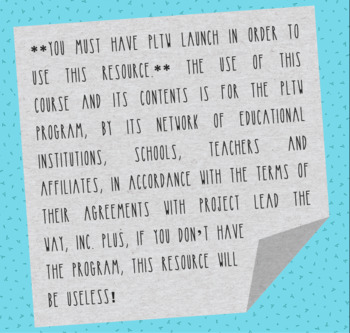Grade 4 Organisms: Structure & Function Module
Messy Bunn Creations
99 Followers
Grade Levels
4th
Subjects
Resource Type
Standards
NGSS4-LS1-1
NGSS4-LS1-2
NGSS3-5-ETS1-1
NGSS3-5-ETS1-2
Formats Included
- Zip
Pages
59+
Messy Bunn Creations
99 Followers
Description
**You MUST have PLTW Launch in order to use this resource! Otherwise, it will not make ANY sense!**
This resource includes the launch log, and vocabulary cards for the Organisms: Structure & Function Grade 4 module.
I made my own packets that follows along with each activity, similar to the K-2 versions. I print them front to back and staple as a packet that they will use throughout the whole module. The vocabulary cards come in 2 sizes. I usually print them out on cardstock and laminate them. But you do you! :)
Total Pages
59+
Answer Key
N/A
Teaching Duration
N/A
Report this resource to TPT
Reported resources will be reviewed by our team. Report this resource to let us know if this resource violates TPT’s content guidelines.
Standards
to see state-specific standards (only available in the US).
NGSS4-LS1-1
Construct an argument that plants and animals have internal and external structures that function to support survival, growth, behavior, and reproduction. Examples of structures could include thorns, stems, roots, colored petals, heart, stomach, lung, brain, and skin. Assessment is limited to macroscopic structures within plant and animal systems.
NGSS4-LS1-2
Use a model to describe that animals receive different types of information through their senses, process the information in their brain, and respond to the information in different ways. Emphasis is on systems of information transfer. Assessment does not include the mechanisms by which the brain stores and recalls information or the mechanisms of how sensory receptors function.
NGSS3-5-ETS1-1
Define a simple design problem reflecting a need or a want that includes specified criteria for success and constraints on materials, time, or cost.
NGSS3-5-ETS1-2
Generate and compare multiple possible solutions to a problem based on how well each is likely to meet the criteria and constraints of the problem.



